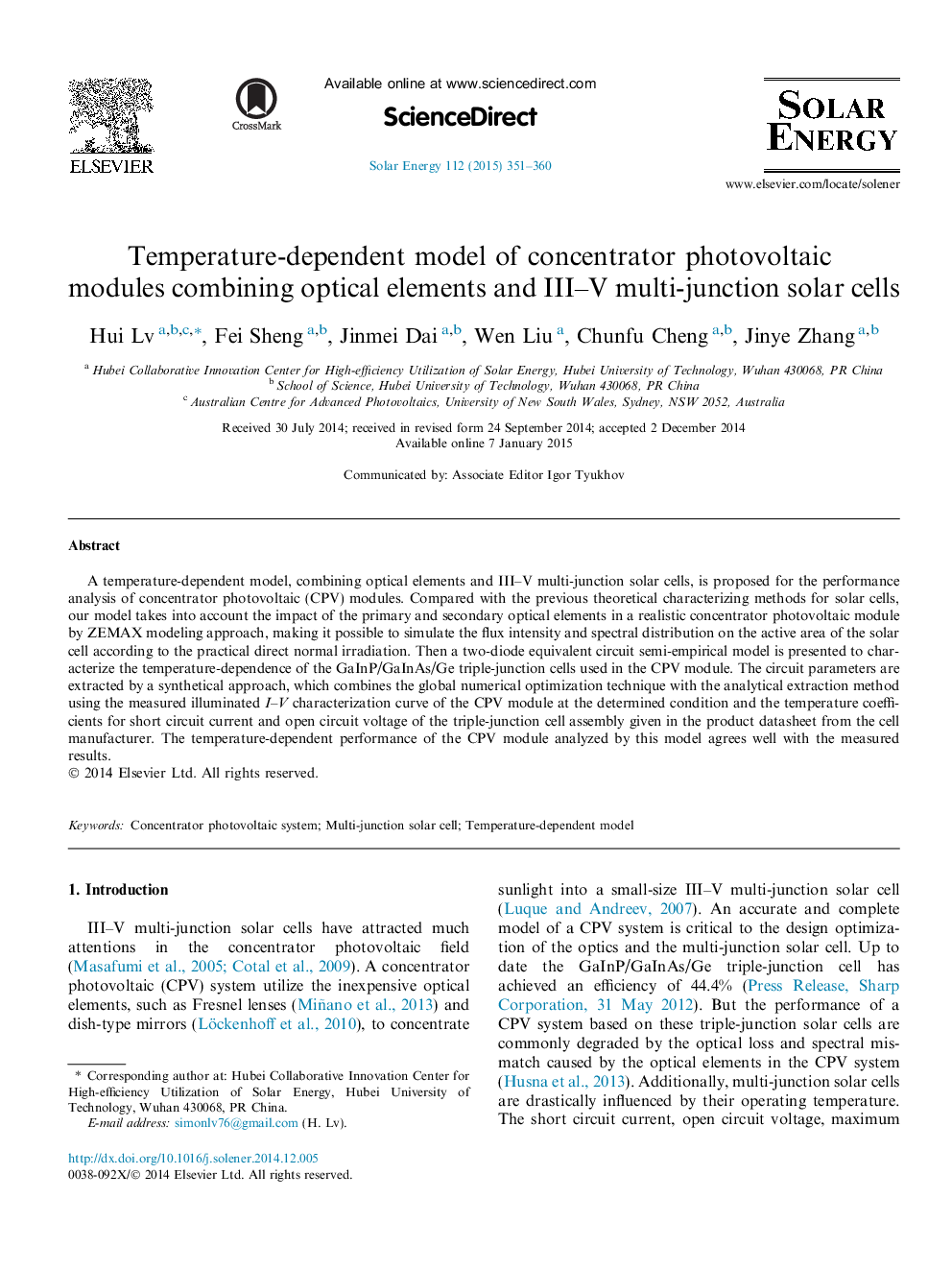| Article ID | Journal | Published Year | Pages | File Type |
|---|---|---|---|---|
| 1549775 | Solar Energy | 2015 | 10 Pages |
•We model temperature-dependent characteristics of HCPV module.•Concentrator optics and triple-junction cells are both taken into account.•Model parameters are extracted by a synthetical approach.•The estimated and measured data agree well for a wide temperature range.
A temperature-dependent model, combining optical elements and III–V multi-junction solar cells, is proposed for the performance analysis of concentrator photovoltaic (CPV) modules. Compared with the previous theoretical characterizing methods for solar cells, our model takes into account the impact of the primary and secondary optical elements in a realistic concentrator photovoltaic module by ZEMAX modeling approach, making it possible to simulate the flux intensity and spectral distribution on the active area of the solar cell according to the practical direct normal irradiation. Then a two-diode equivalent circuit semi-empirical model is presented to characterize the temperature-dependence of the GaInP/GaInAs/Ge triple-junction cells used in the CPV module. The circuit parameters are extracted by a synthetical approach, which combines the global numerical optimization technique with the analytical extraction method using the measured illuminated I–V characterization curve of the CPV module at the determined condition and the temperature coefficients for short circuit current and open circuit voltage of the triple-junction cell assembly given in the product datasheet from the cell manufacturer. The temperature-dependent performance of the CPV module analyzed by this model agrees well with the measured results.
